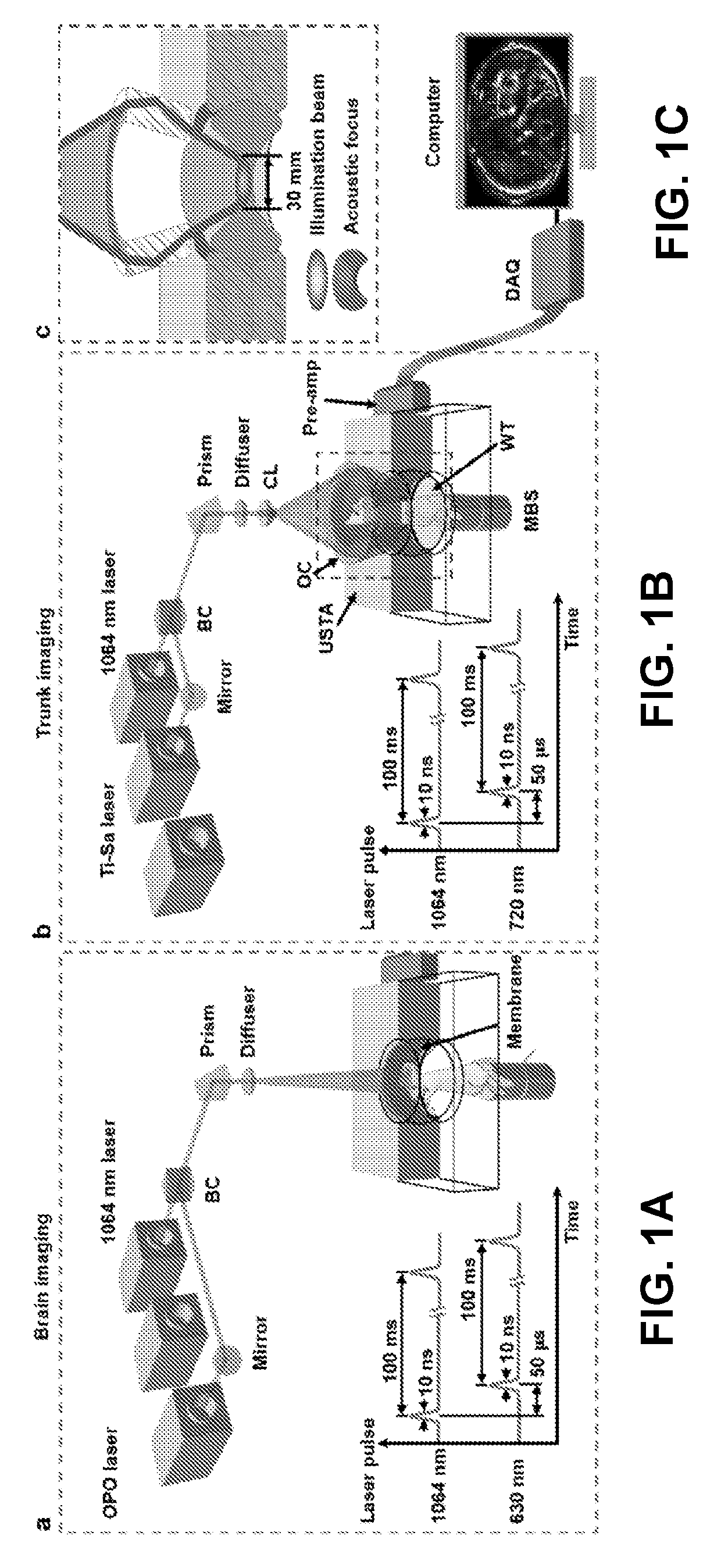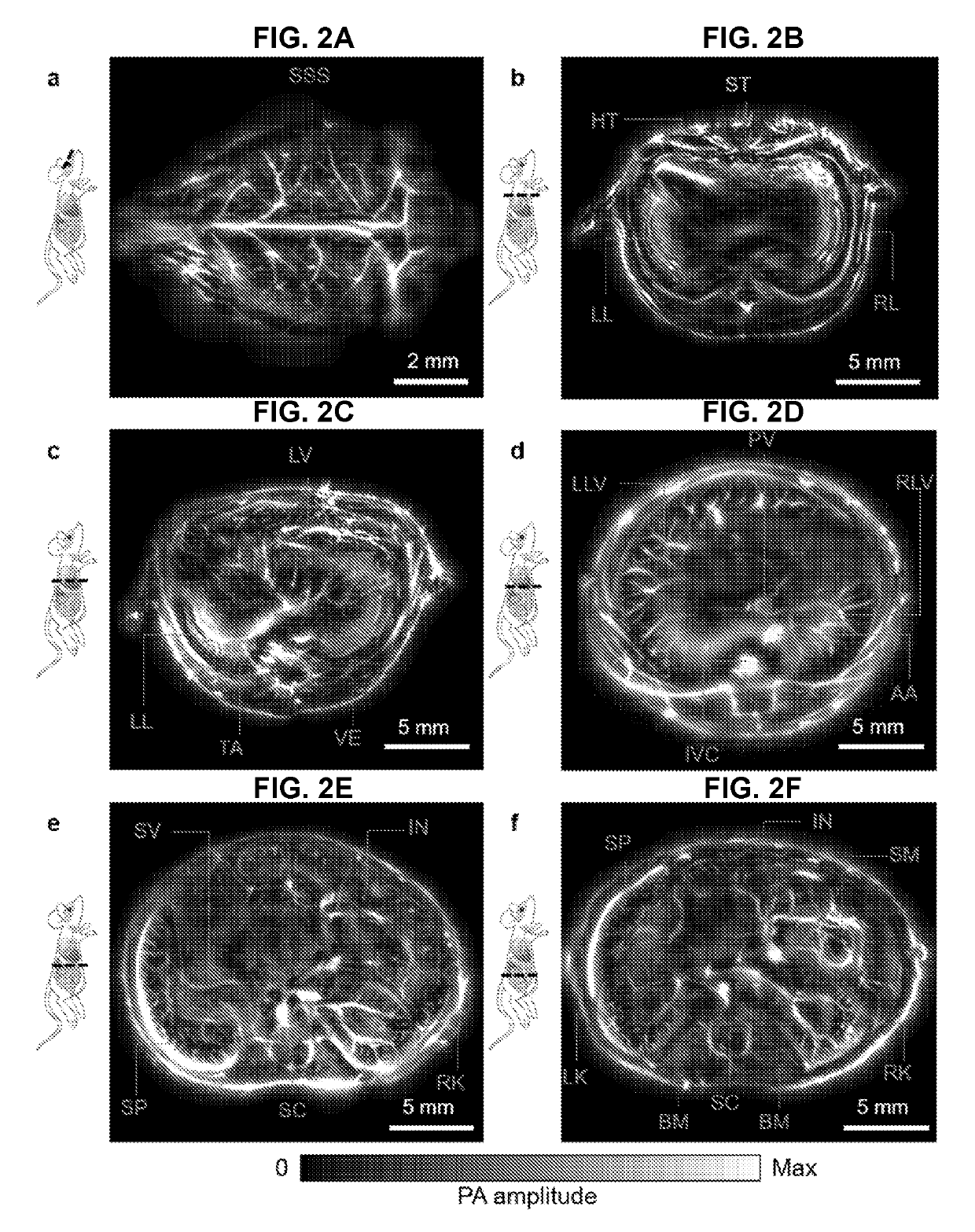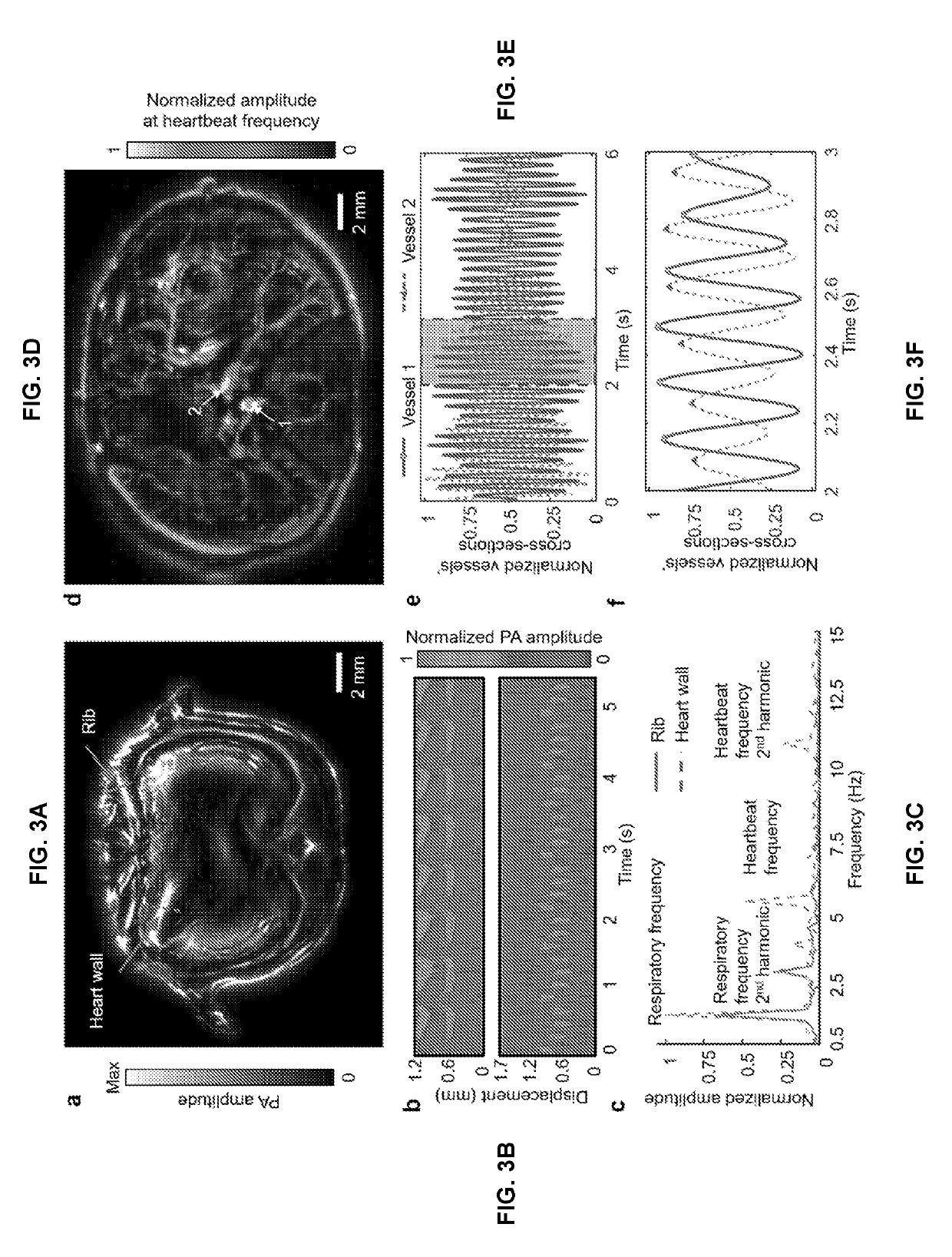Single-impulse panoramic photoacoustic computed tomography (sip-pact)
a computed tomography and single-impulse technology, applied in the field of single-impulse panoramic photoacoustic computed tomography, can solve the problems of large limitations, long data acquisition time, and high cost of high-strength magnetic fields and other problems, to achieve the effect of high spatiotemporal resolution and high spatial resolution
- Summary
- Abstract
- Description
- Claims
- Application Information
AI Technical Summary
Benefits of technology
Problems solved by technology
Method used
Image
Examples
example 1
Body PACT Using SIP-PACT System
[0245]To demonstrate 3D whole body photoacoustic computed tomographic (PACT) imaging using the SIP-PACT system and methods described herein, the following experiments were conducted.
[0246]Adult, 8-10-week old nude mice (Hsd:Athymic Nude-FoxlNU, Harlan Co.; 20-30 g body weight) were used for whole body imaging in vivo experiments. Throughout the experiment, each mouse was maintained under anesthesia with 1.5% vaporized isoflurane. For brain imaging, the mouse was secured to a lab-made imaging platform (see FIG. 25), and the cortical surface was positioned in alignment with the ring transducer array's focal plane. During the whole body imaging experiments, the mouse's fore and hind legs were respectively taped to the top and bottom parts of the lab-made holder that held the animal upright during imaging. The top of the holder included an aluminum tube affixed to the animal's nose and mouth, and the bottom of the holder included an aluminum cylinder attac...
example 2
esolved Imaging of Cardiac and Respiratory Cycles Using SIP-PACT System
[0250]To demonstrate 2D whole body time-resolved imaging of cardiac and respiratory cycles using the SIP-PACT system and methods described herein, the following experiments were conducted.
[0251]Nude mice were prepared and mounted in the SIP-PACT system illustrated in FIG. 1B using a protocol similar to the protocol described in Ex. 1. The mouse was positioned in the SIP-PACT system so that the focal plane of the ring transducer array passed through the heart of the patient, resulting in a PA image similar to the PA image shown in FIG. 2B. The SIP-PACT system was operated in a manner similar to Ex. 1 using full-ring side illumination and side detection with 1064 nm laser pulses delivered at a 50 Hz repetition rate to the same transverse plane of the mouse's thoracic cavity to obtain a time-series of images.
[0252]FIG. 3A is a representative image of the transverse slice through the thoracic cavity of the mouse. At ...
example 3
l Imaging Using SIP-PACT System
[0257]To demonstrate functional imaging using the SIP-PACT system and methods described herein, the following experiments were conducted.
[0258]Adult, 3-4-month-old Swiss Webster mice (Hsd: ND4, Swiss Webster, Harlan Co.; 20-30 g body weight) were used for in vivo functional brain and CTC imaging. Prior to brain functional imaging using the SIP-PACT system, the hair of each mouse was removed by clippers and depilatory cream. Each mouse was then secured to a lab-made imaging platform, and the brain's cortical surface was positioned aligned with the transducer array's focal plane as described in Ex. 1. Each mouse breathed an inhalation gas containing varying concentrations of oxygen to systemically modulate the oxygen saturation of hemoglobin (sO2) within the mice during functional SIP-PACT imaging, as described in detail below.
[0259]A SIP-PACT system similar to the system described in Ex. 1 (see FIG. 1A) was used to obtain time series PA images of the mo...
PUM
 Login to View More
Login to View More Abstract
Description
Claims
Application Information
 Login to View More
Login to View More - R&D
- Intellectual Property
- Life Sciences
- Materials
- Tech Scout
- Unparalleled Data Quality
- Higher Quality Content
- 60% Fewer Hallucinations
Browse by: Latest US Patents, China's latest patents, Technical Efficacy Thesaurus, Application Domain, Technology Topic, Popular Technical Reports.
© 2025 PatSnap. All rights reserved.Legal|Privacy policy|Modern Slavery Act Transparency Statement|Sitemap|About US| Contact US: help@patsnap.com



